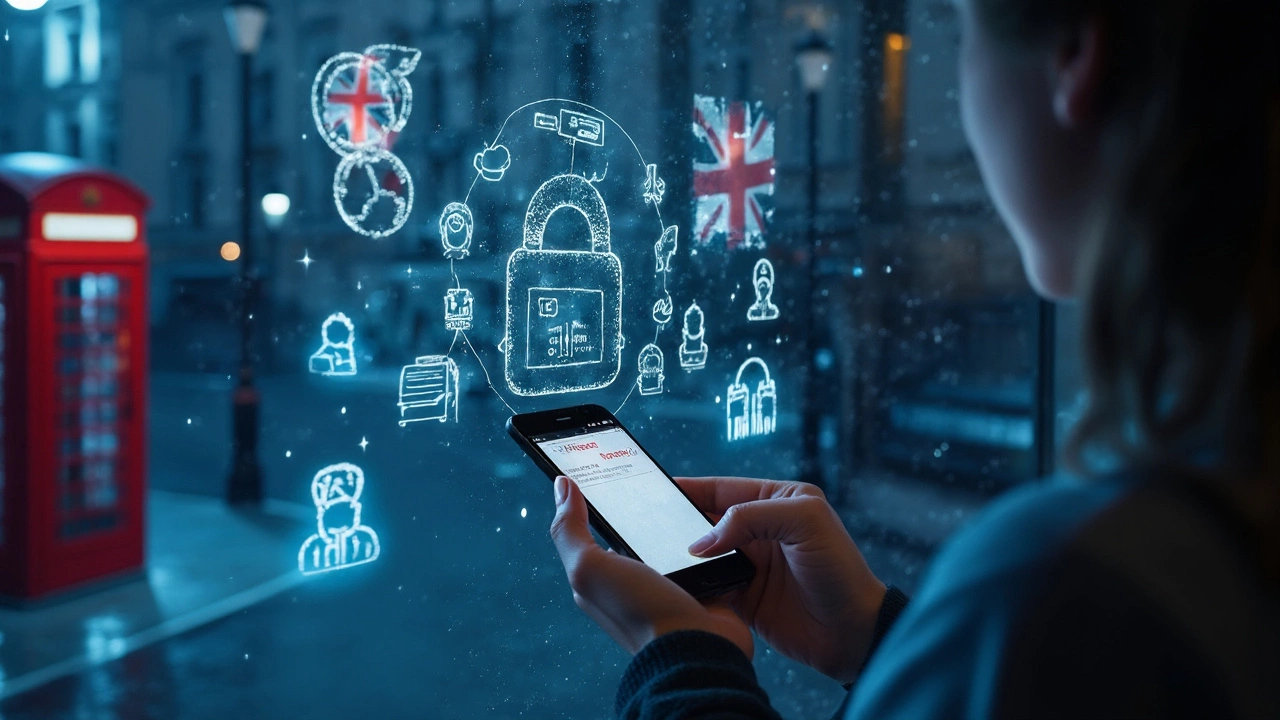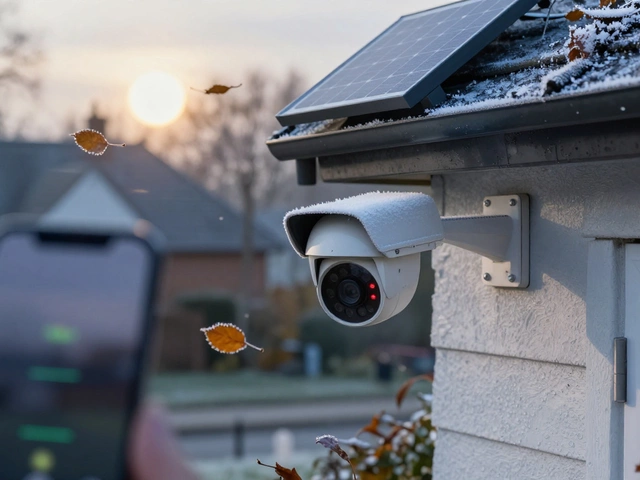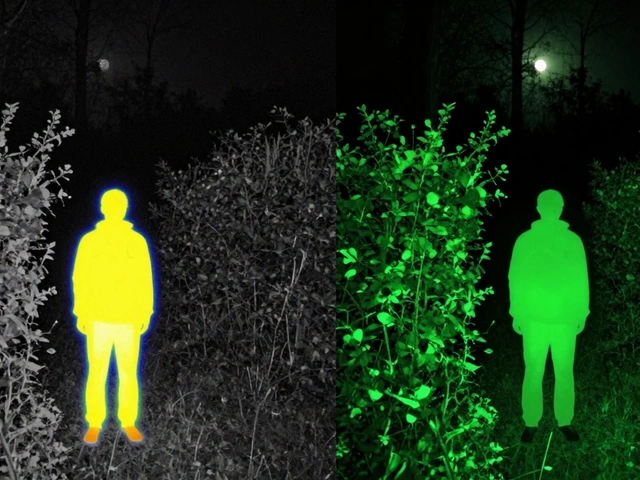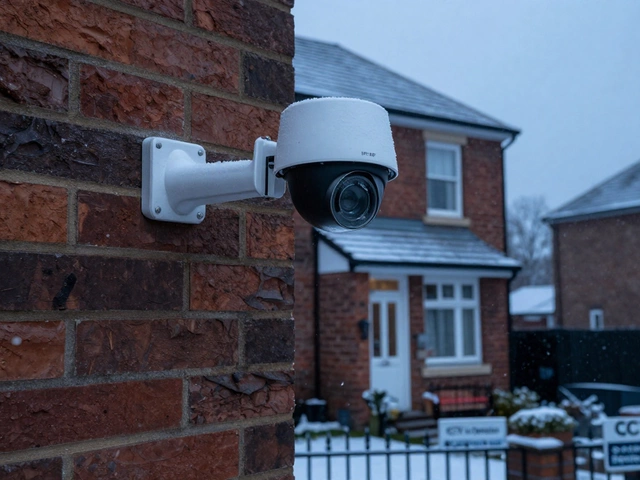If you have a smart speaker in your kitchen or a camera by your door, you’ve probably wondered: am I the only one in control here? It’s not just you or me—pretty much anyone with automated lights, a smart door lock, or even a Wi-Fi kettle has handed over some chunk of power to technology. Here’s the kicker: the person holding your phone isn’t always the one holding the reins.
Think about the apps you use every day to check your camera feed or tell Alexa to play music. Most of those apps connect not just to you, but to company servers somewhere else. That means Amazon, Google, or even smaller brands often see glimpses of what’s happening at your place. Want less of an audience? Start with the basics: use strong, unique passwords for every device, and never skip software updates. Even a lazy update can leave a crack in the wall for someone to sneak through.
My own dog, Rex, once tripped our smart home alarms. Funny at the time, but it made me dig deeper into who could actually override or snoop on our system. Turns out, it’s not only hackers you need to worry about—sometimes it’s your own settings or what you’ve agreed to in the small print. If a device offers two-factor authentication or privacy controls, don’t just ignore them. Trust me, your future self will thank you when a dodgy pop-up tries to grab your living room camera feed.
- Who’s Got the Power? Owners vs Outsiders
- Big Tech’s Role: Are They Watching?
- How Devices ‘Talk’: Networks, Clouds, and Apps
- The Hacker Factor: How Vulnerable Is Your Home?
- Simple Moves to Boost Security
- What Happens When Things Go Wrong?
Who’s Got the Power? Owners vs Outsiders
So, you paid for your smart thermostat, lights, or lock. That means you’re the boss, right? Not exactly. You control when you turn off the lights or set the temperature, but there are a lot more hands on those reins than you’d think.
First, the obvious: anyone with the main admin account or app access in your home can fiddle with your devices. This could be your family, a roommate, or your partner. But, most devices have guest modes, which let people control stuff in a limited way. Here’s where it gets tricky—leave your Wi-Fi password lying around and you might accidentally hand over the keys to someone you barely know.
But let’s talk about outsiders. Every smart device that connects to the internet sends info through your router and out to companies like Google, Amazon, or Apple. Even budget brands sync with their own overseas servers. When you click “agree” during setup, you’re often letting these companies update, tweak, or even shut down your gear remotely. It’s all in those long privacy policies nobody actually reads. Did you know Nest users lost support for some old smart home gadgets when Google bought Nest? People woke up and discovered their thermostats just wouldn’t work together anymore.
Now, throw hackers into the mix. Last year, a well-known report from Palo Alto Networks pointed out that over 57% of smart home devices had weak default passwords, making them easy pickings. If your device gets hijacked, someone else can literally lock and unlock your doors, flip your lights, or snoop on cameras. Not only does this mess with privacy, it risks your actual safety.
If you want to stay in control, here’s what matters most:
- Change your device login and Wi-Fi passwords from the default.
- Pick smart devices that let you set up user roles, so only trusted people get full access.
- Regularly boot out users you don’t recognize from app settings.
- Keep track of accounts linked to your smart home—when you give access to an app or a guest, make sure you can remove it easily.
The quick truth is, owning smart home tech doesn’t mean you always have the upper hand. Smart home control is a shared deal with other people in your house, the companies making your gear, and anyone clever enough to break the rules.
Big Tech’s Role: Are They Watching?
Let’s not kid ourselves—big names like Google, Amazon, Apple, and Samsung have a serious grip on smart home markets. When you link a smart light or speaker to their app, the company is collecting data about how and when you use it. Take Amazon’s Alexa: every voice command gets analyzed and used to "improve services," which also often means targeting ads or making the whole ecosystem more sticky. Google’s Nest cameras? They save video clips to the cloud, sometimes for weeks, and have had their own share of privacy headlines over the years.
Now, they don’t usually have staff poring over your daily routines. What happens instead is your device usage is scooped up, anonymized (sometimes), and tucked into giant data warehouses. But here’s where it gets dicey: this data helps tech companies build detailed profiles about you, your habits, and your household. For example, Google admitted a couple of years ago that some of their own staff accidentally listened in on private conversations through Google Assistant recordings. Amazon had a similar oops moment. Even when these things happen “by accident,” it proves there’s more going on behind the curtain than just controlling your lamps.
So, what can you do if you want your smart home to stay private? First, poke through your device settings and opt out of data sharing or voice recording whenever possible. Many services offer a way to delete your voice history or turn off continuous recording—but they don’t make those options obvious. Next, take time to actually read (yeah, boring, but important) the privacy policy for each app and device. You’ll usually find some hidden perk for users who care enough to untick a box or two.
- Regularly review permissions for your devices and apps. Does Alexa need access to your calendar?
- Clear out your data history every so often—set a calendar reminder if you need to.
- Don’t link devices you aren’t using, and revoke old or unused accounts from your hub.
The bottom line is, the bigger the company, the more data they collect. If you want a truly private setup, look for brands that are upfront about what they gather—and double down on your own settings. A little effort now keeps more of your life just yours.
How Devices ‘Talk’: Networks, Clouds, and Apps
Here’s the thing: your smart gadgets love to chat with each other, but their conversations don’t just stay inside your house. Most smart home systems use your Wi-Fi to share info with other gadgets or apps, and then connect to the cloud (basically, a bunch of computers owned by big tech companies) to send or store data. That’s how you can ask Alexa to turn on lights when you’re not even home—your command takes a quick trip from your phone, through your router, out to the internet, then to a company server, and finally back to your device.
Most smart home gear uses one of these main ways to communicate:
- Wi-Fi: Lots of devices (cameras, thermostats, plugs) rely on your home Wi-Fi. This means everything flows through your router, so it’s the number one target for hackers.
- Bluetooth: Used for close distances—think smart locks or speakers.
- Zigbee or Z-Wave: These are special wireless networks just for smart devices. They create a private, local network but usually need a hub to translate for your phone or the internet.
When you use an app to control your gadgets, the app usually pings company servers almost every time. For example, turning off a smart bulb through its app usually means the command zips across the internet first. Want to know how busy your smart home actually is? Here’s some eye-opening data:
| Device | Average Daily Connections | Cloud Dependent? |
|---|---|---|
| Smart Speaker | 50+ | Yes |
| Doorbell Camera | 60+ | Yes |
| Smart Bulb | 10-30 | Usually |
| Smart Lock | 15 | Sometimes |
The catch: every time a device calls home (like to update schedules or check for commands), it opens a window that could get abused if you don’t lock things down. The more cloud-based features you use—voice assistants, remote access, fancy automations—the more you need to care about strong passwords and regular device updates.
One last tip: if a device lets you turn off cloud features and just work within your home (sometimes called “local control”), try it out. Local control keeps your private stuff off company servers and usually responds faster, with fewer privacy risks.

The Hacker Factor: How Vulnerable Is Your Home?
It’s pretty wild how easy it can be for someone with basic tech skills to pierce the bubble of your smart home. In 2022, researchers from Consumer Reports found most smart devices had glaring security gaps, with default passwords and outdated software being the number one culprits. Don’t believe me? In one real-world example, hackers infiltrated baby monitors and talked through them because owners never changed the default logins.
Your Wi-Fi network is usually the front gate. If your router isn’t set up with a strong password, a hacker can stroll right in and start poking around your devices. Once inside, it can get creepy fast. Smart bulbs, cameras, or speakers can turn into eavesdropping tools. Heard about that family in Oregon whose Alexa sent a private conversation to a random contact? That wasn’t a fluke—it’s a wake-up call that even big-name brands have slip-ups.
Here are some real risks smart home owners deal with:
- Smart home cameras can be accessed remotely if you reuse passwords, or never update the firmware.
- Smart speakers and assistants sometimes record by accident, grabbing more info than you’d think.
- Outdated routers create a doorway for someone to control your lights, locks, or even crank up the thermostat at 3am just for fun.
And it’s not always a hoodie-wearing hacker in a basement. Sometimes, people with access to your accounts—ex-partners, nosey neighbors, or even a babysitter—can poke around if they know your passwords or if you give them too much access.
So, how do you lower the risk? Change every default password. Turn off remote access you don’t need. Make sure any app tied to your devices is legit—as in downloaded from the real app store, not some sketchy website. If your devices have two-factor authentication, use it. It’s not bulletproof, but it throws extra roadblocks in the way for anyone who shouldn’t be poking around your living room lights.
Simple Moves to Boost Security
You don’t need to have a computer science degree to keep your smart home secure. Most folks get tripped up by the basics, but getting those right can outsmart a lot of problems right at the gate.
Start with your Wi-Fi. If you’re still using the password that came on the router sticker, change it now. Go for something long, random, and not shared with any other account. Devices can’t be secure if your home network is weak.
- Turn on two-factor authentication for every app and smart device that allows it. This one’s easy: it just means you’ll get a code by text or app before anything changes or logs in. It’s a huge block against unwanted entry.
- Update your devices when they buzz you about it. Smart cameras, speakers, and even things like lightbulbs get security fixes all the time. Set devices to update automatically if you can, so you’re never left unpatched.
- Ditch the admin defaults. Anything that lets you pick your own username or password (routers, cameras, thermostats)—do it. “Admin/admin” gets tried by anyone who wants in. Don’t make it easy.
- If you’re not using a device, unplug it or at least disconnect it from Wi-Fi. There’s no need for that baby monitor to be online if your kid’s out playing soccer for the afternoon.
- Check privacy settings in apps you use for your smart gear. Most people just tap “OK” when setting up, but companies sometimes turn on more sharing than you think. Go back and shut down anything you don’t want them collecting.
Finally, consider setting up a separate Wi-Fi network just for your smart gadgets. Many modern routers let you create a “guest” network. That way, if something fishy happens with your smart toaster, your laptop and phone stay safe.
What Happens When Things Go Wrong?
Stuff goes sideways with smart homes more often than people think. Maybe your front door unlocks for no reason, or your thermostat cranks the AC when nobody’s home. Glitches are annoying, sure, but a true security breach is a whole different thing. A study by the cybersecurity group UpGuard found that more than 1.2 billion smart home records were exposed in past breaches—think camera feeds, voice snippets, and device histories, all out there.
When something does go wrong, confusion kicks in fast. Half the time, it’s hard to tell if your smart home is just acting up or if someone else is messing around. I once had my lights flash mysteriously at 3 a.m. (thanks for nothing, buggy update). But there are bigger headaches out there—like the famous Ring camera hacks in 2019, where families heard creepy voices through their own baby monitors. It rattled a lot of folks and led to a bunch of lawsuits.
“If it connects to the internet, there’s a good chance someone, somewhere can try to get in unless you’ve locked it down,” says Troy Hunt, well-known security researcher and creator of Have I Been Pwned.
If your smart home starts acting weird, here’s what to do right away:
- Disconnect the device from the internet.
- Change passwords on all related accounts.
- Check for any unfamiliar devices or users logged in.
- Update the device firmware and the control app ASAP.
- If it’s still acting odd, reach out to the manufacturer’s support or even a local IT pro.
It helps to know what kinds of smart home fails are most common. Here’s a quick snapshot:
| Incident Type | Percent of Cases (2024 Study) |
|---|---|
| Device goes offline/crashes | 41% |
| Unauthorized access/hacking | 17% |
| Privacy leak (data exposed) | 22% |
| Physical security fail (unlocking doors/windows) | 8% |
| Annoyances (weird noises, lights, automation bugs) | 12% |
One of the best tips: always check the device logs if your security system or router supports it. Those logs can show if a stranger tried to sneak in or if your gadgets are just glitchy. And don’t be shy about unplugging stuff if you feel spooked—better a dark hallway than risking your privacy.






